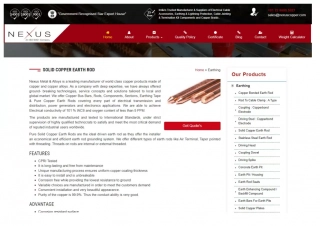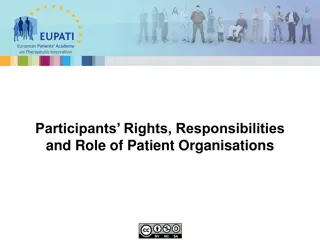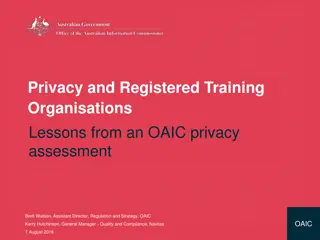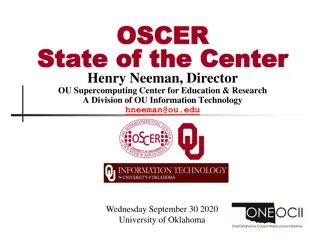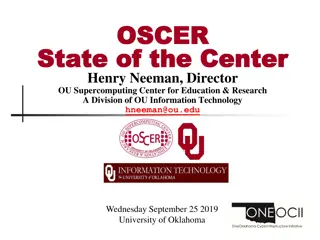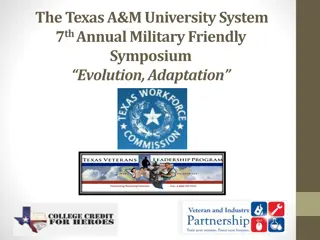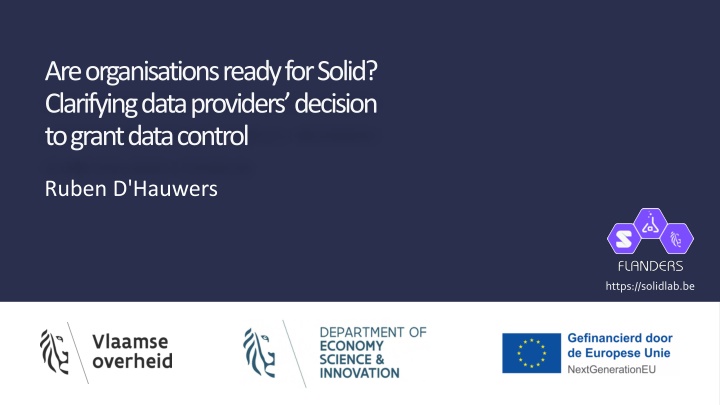
Solid Adoption: Business Dimensions and Challenges Revealed
Explore the readiness of organizations for Solid, a data control initiative, through insights on data providers' willingness to grant control to data subjects. Discover the drivers and barriers of Solid adoption, along with research questions on business dimensions influencing data providers. Delve into the methodology used for the Solid ecosystem analysis in Flanders. Contact Ruben D'Hauwers for more information.
Download Presentation

Please find below an Image/Link to download the presentation.
The content on the website is provided AS IS for your information and personal use only. It may not be sold, licensed, or shared on other websites without obtaining consent from the author. If you encounter any issues during the download, it is possible that the publisher has removed the file from their server.
You are allowed to download the files provided on this website for personal or commercial use, subject to the condition that they are used lawfully. All files are the property of their respective owners.
The content on the website is provided AS IS for your information and personal use only. It may not be sold, licensed, or shared on other websites without obtaining consent from the author.
E N D
Presentation Transcript
AreorganisationsreadyforSolid? Clarifyingdataproviders decision tograntdatacontrol Ruben D'Hauwers https://solidlab.be
What do you think? Are private data providers willing to grant complete data control to data subjects? o Yes, they will allow data subjects to share all data o It depends o No, they will not allow data subjects to share any data 2
Drivers Organisations Solid Adoption 1. COMPANIES HOPE SOLID ENABLES 2 TO EVOLVE TOWARDS A DATA ECOSYSTEM 3 RESULTING IN BUSINESS OUTCOMES 3.1 Increasing customer intimacy and personalization 2.1 Access to high quality, authentic, up to date third party data 1.1 Legal: GDPR implementation 1.2 User Experience: Consent Management 3.2 Develop and maintain data- driven business models 2.2 Access to user generated and verified data 1.3 Trustworthiness on handling personal data 3.3 Improve processes and reduce costs 2.3Sharing data with third parties and data collaborations 1.4 Interoperability in data ecosystems 3.4 Business differentiation 3
Barriers Organisations Solid Adoption UNSURE VALUE 1. Uncertain Return SOLID: revenue models & SOLID adoption 3. Unsure access to data: Willingness to share of users (3.1)/ data providers (3.2) UNCERTAIN COST and RISK 2. Unsure IT investment cost: technology maturity 4. Data-as-an-asset: data security and data asset control COMPANY INVESTMENT DECISION SOLID 4
Research Question What are the business dimensionsinfluencing data providers willingness to grant access control to data subjects? o What are the relative preferences of data providers for this decision in a mobility personal data ecosystem? o How can these insights be applied to inform MAAS and C-ITS use case data ecosystem setups? For more information, contact ruben.dhauwers@vub.be or read Solid Readiness for private sector report (Deliverable 8.4) 5
METHODOLOGY Exploratory interviews in the Solid Ecosystem Flanders AHP analysis in Solid Mobility Profile experiment Pairwise comparison to identify preferences of data providers Expert workshop on three Solid Mobility Profile ecosystem setups Determine business dimensions in Solid Ecosystem Flanders Solid Mobilityworkshop with 7 experts Assess utility value of 3 use cases in MAAS and C- ITS ecosystem setups PairwiseAHP comparison of dimensions Telephone interviews with 21 data and mobility experts 25 interviews in the Solid ecosystem in Flanders, Belgium Axialcodingof interviews 6
Business (sub)Dimensions Granting Data Control VALUE CONTROL Level of Competition (-) Ecosystem Value (+) Actor Relationship Level of Collaboration (+) Value Creation User Value (+) Coreness (-) Level of Data Competitiveness Level of Processing (-) Value Capturing (+) Value Capturing Privacy Risk (-) Privacy Risk 7
SOLID MOBILITY PROFILE Private Mobility Data Provider (MAAS, Ridesharing, Employer, ) Ecosystem 1: Identity provider for sharing identity in Car- Bike sharing Solid Mobility Profile User in control to store, manage and share data Data Available Mobility Profiles Location / Free Floating Car data Subscriptions Mobility Usage All personal Mobility Data in Solid Pod Identity: address, drivers license, name,.. Behavioural: Intentions, profile, preferences,.. Mobility: (Real-time) location, trajectories.. Commercial: Subscriptions, TO SHARE DATA WITH OTHER PLAYERS GIVE USERS CONTROL AND TRANSPARANCY OVER PERSONAL DATA Ecosystem 2: Identity provider for sharing identity in Car- car sharing Public Mobility Data Provider (Government, public transport..) Neutral (Apps <>Data) User in Control Interoperable Ecosystem 3: Location data sharing in C-ITS solution to switch on traffic lights for biker Data Available Drivers license Subscription Profile Mobility Budget 8
STATIC PREFERENCES (dimensions) VALUE CONTROL Value Creation 25,96% Value Capturing 22% Level of Data Competitiveness 20% Actor Relationship 17,87% Privacy Risk 14% 9 Sample: 21 respondents, Consistency Ratio 0,026
STATIC PREFERENCES (subdimensions) VALUE 48% CONTROL 52% Value Capturing 22,37% End-User Value 14,8% Coreness Data 14,05% Privacy Risk 13,98% Ecosystem Value 11,15% Level of Competition 9,49% Level of Collaboration 8,18% Level of Processing 5,98% 10 Sample: 21 respondents, Consistency Ratio 0,026
STATIC PREFERENCES (sector difference) TRAFFIC DATA AUTOMOTIVE MAAS Actor Relationship 36,6% Value Creation 27,5% Value Creation 26% Privacy Risk 21% Value Capturing 22,6% Value Capturing 22% Level of Data Competitiveness 22% Value Creation 17,4% Value Capturing 19% Level of Data Competitiveness 14,3% Level of Data Competitiveness 19% Actor Relationship 16,77% Privacy Risk 9,1% Actor Relationship 13,3% Privacy Risk 15% MAAS Sample : 12 respondents, Consistency Ratio 0,05 Traffic Data Sample : 5 respondents, Consistency Ratio 0,049 Automotive Sample : 3respondents, Consistency Ratio 0,0,096 11
Solid Mobility Profile Experiment Ecosystem 3: Location data sharing in C-ITS solution to switch on traffic lights for biker Ecosystem 1: Identity provider for sharing identity in Car- Car sharing Ecosystem 2: Identity provider for sharing identity in Car- Bike sharing Indirectcompetition, lotof colla boration between MAAS Value Capturing: cost- and risk sharing Focus on creating user value + Ecosystem collaboration, but competition navigation systems Value capturing: revenue model data provider Location data is core business and highly processed Privacy risk high but mitigated due to Solid Mobility Profile Directcompetition, lot of collab oration between MAAS Value Capturing: cost- and risk sharing Focus on creating user value Drivers licence = moderate coreness, low processing Actor relationship = directcompetition, but a lot of collaboration between MAAS enable multimodal Drivers licence = moderate coreness, low processing Utility Score: 1,16 Utility Score: 0,48 Utility Score: 1,13 12 Expert Workshop with 7 participants
Orchestrator Strategies Ecosystem set up Dimension Strategy Weight Value creation & Capturing New revenue models Use Case development Enable reciprocity 48% Level of data competitiveness Trustworthy aggregators Shared control competitive data 20% Actor Relationship Determine which actors to include Ecosystem Collaboration Strategies Ecosystem agreements 18% Privacy Risk Decentralized and interoperable storage solutions 14% 13
Thank you Ruben.dhauwers@vub.be

